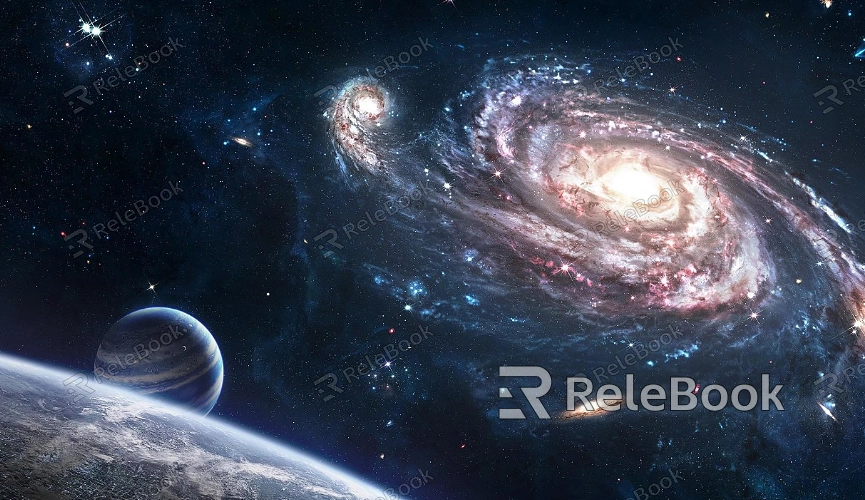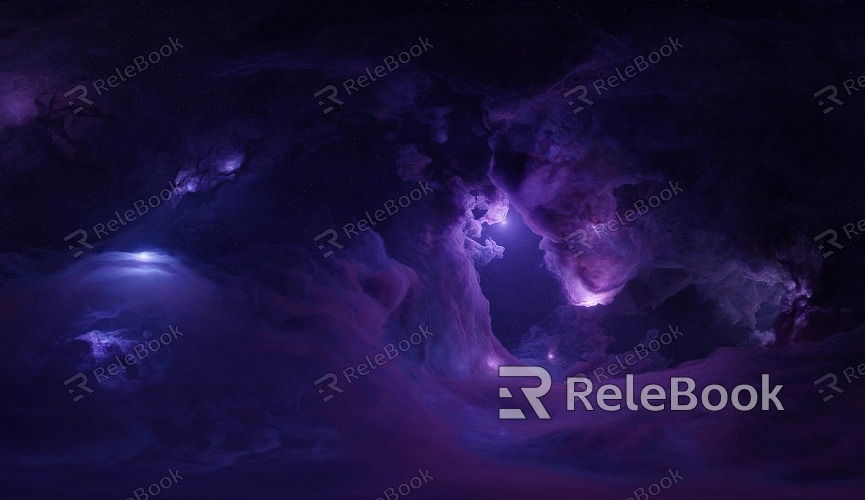How Do HDR Textures Affect Lighting and Shadows in Unity
Using HDR (High Dynamic Range) textures in Unity can significantly enhance the realism of lighting and shadow effects. Common applications include environmental lighting, character rendering, game scenes, and visual effects. Beyond Unity, other 3D software such as Blender, 3ds Max, and Maya also extensively use HDR technology for lighting processing, particularly in high-quality rendering projects. This article explores the impact of HDR textures on lighting and shadows in Unity, including how they work and how to implement them effectively.

1. The Relationship Between Lighting and HDR Textures
HDR textures can store more lighting information than standard textures. Traditional LDR (Low Dynamic Range) textures often lose details when processing bright or dark areas, while HDR textures retain this information, which is crucial for scene lighting in Unity.
Brightness Range: HDR textures allow a broader range of brightness, meaning both bright and dark areas in a scene can be represented more naturally, avoiding overexposure or overly dark areas.
Environmental Lighting: In Unity, HDR textures are typically used to create realistic environmental lighting, often through Skyboxes or the Global Illumination (GI) system. When HDR textures are used in a Skybox, they provide more lighting data than standard textures, contributing to a more authentic scene atmosphere.
2. Lighting Intensity and Color Representation
The wide color and brightness range of HDR textures directly influence the intensity and color of lighting in Unity. By using HDR textures, designers can fine-tune the intensity and color of lights to achieve the desired effect.
Lighting Intensity Control: Since HDR retains information from the highlights, designers can adjust the intensity and angle of light sources to control the fine details of light and shadow in the scene.
Color Saturation: HDR textures allow for higher color depth, resulting in lighting with richer color saturation and gradient details, especially noticeable at light sources and in shadow transitions.
3. Precision of Shadow Effects
HDR textures not only affect lighting but also have a significant impact on how shadows are rendered. When using HDR textures, Unity can produce more detailed and realistic shadow effects.
Shadow Depth: HDR textures allow for more precise light source processing, creating shadows with richer depth, from soft shadows to deep shadows, with greater visual quality.
Shadow Detail: Because HDR retains information from both bright and dark regions, shadows’ edges are processed more naturally, eliminating issues like blurred or distorted shadow edges.
4. Performance in Dynamic Lighting
In dynamic scenes where light sources and shadows change, HDR textures enhance performance and improve visual quality.
Real-Time Lighting Changes: In Unity’s real-time lighting system, HDR textures enhance the performance of dynamic light sources. For example, when characters move, the lighting and shadows change dynamically, with HDR textures preserving subtle shifts in light and shadow, enhancing the scene's visual effect.
Animation Effect Enhancement: For animated scenes, HDR textures help maintain consistent lighting and shadow transitions across different times or camera cuts, preventing unnatural lighting shifts.

5. Impact on Reflection Effects
HDR textures in Unity also have a direct impact on object reflections. Reflections are typically used to depict surface gloss and light refraction.
High-Quality Reflections: The high brightness and contrast data stored in HDR textures allow reflections to appear more realistic. For example, when reflecting glass or water surfaces, HDR textures capture complex light and shadow changes in the environment, making reflected objects look more authentic and lifelike.
Environment Mapping: Through environment mapping techniques, HDR textures can make highlights and light sources in reflections more prominent, enhancing the overall visual effect.
6. Unity's Lighting Models and HDR Textures
Unity’s lighting models can be tightly integrated with HDR textures to improve the lighting and shadow effects across scenes.
Global Illumination: Unity’s global illumination system can combine with HDR textures to simulate real-world lighting reflection and scattering, allowing light to propagate more naturally throughout a scene.
Light Probes: Light probes that use HDR textures enhance the appearance of indirect lighting, especially in complex scenes, more accurately simulating light bounce and diffusion.
7. The Impact of HDR Textures on Performance
While HDR textures bring higher-quality lighting and shadow effects, it's important to consider their impact on performance.
Storage and Rendering Overhead: HDR textures generally occupy more storage space than standard textures, which can increase loading times and memory usage in large scenes.
Optimization Tips: Designers can optimize HDR texture usage by employing techniques like Mip Mapping or lowering resolution when necessary to reduce performance overhead.
HDR textures have broad and powerful applications in Unity, significantly enhancing lighting and shadow quality. If you're looking to explore more HDR texture techniques and applications, be sure to visit the Relebook platform, where you’ll find a wealth of learning resources and industry-leading technical articles.

